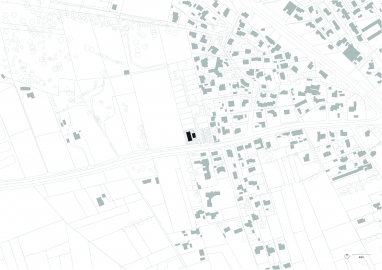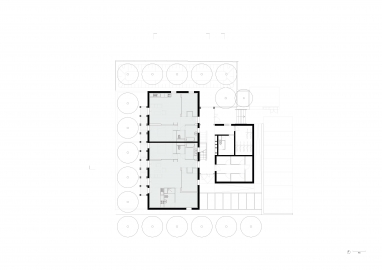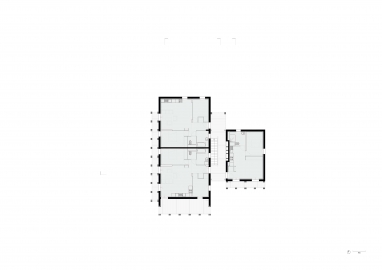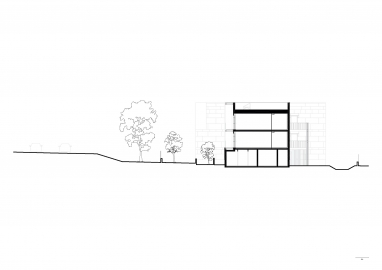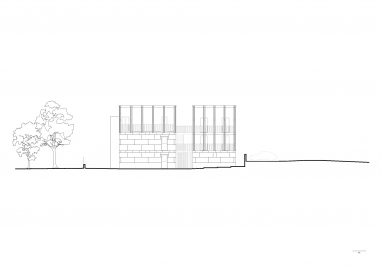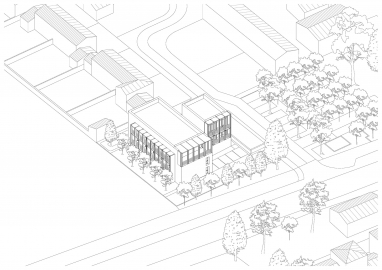8 Intermediate Social Housing Units
The housing project goes beyond the site environment to take account the wider context of the massif de la Nerthe, where stone architecture creates a unique atmosphere. Entirely designed with local stone, the building stands out from the site but is part of the long history of the area, using materials which embodie the territory.
Located at the bow of a new subdivision at the city entrance of Gignac-la-Nerthe, the project proposes to integrate social housing throught the use of a special materiality. The architectural design proposes two volumes that seek to harmonize with the surrounding urban context of isolated and grouped houses. The project and its typological distribution make it possible to offer eight housing units on this plot. The edifice built in massive stone, resonates with the village’s vernacular constructions. The outside spaces are designed in a wooden structure and complete the accommodation with places to contemplate the massif de la Nerthe. The stones from the neighbouring quarries compose the facade and mark the place with a particular athmosphere. The raw material expresses its strength.
The project is located in the center of the area. A dialogue is created with the surrounding vegetation so the elements form a strong warm atmosphere. The configuration of the site plan allows to offer large views of the landscape. Furthermore, the thikness decreases the noise pollution of the avenue de la Méditerranée. The volumes which compose the project, structured in two distinct blocks, represent two uncluttered masses. The simple and radical position, forms a square in the overall composition. The ground floor of the smaller volume houses the technical spaces and cellars. The 8 apartments are spread over the other floors. All accommodations have generous outdoor space. A pedestrian access is proposed from the road of the subdivision, it is divided into two paths. The first allows quick access to vertical circulations via a staircase. The second softer in the form of a ramp wraps around the smallest volume.The project is intended to be a welcoming, permeable place, inviting users to explore it. The connections take the form of outdoor pathways serving the many meeting spaces that accompany residents to their homes.
The project was designed around two construction systems. One for the interior living spaces. A second for the extensions housing and the outdoor living spaces. The main volumes, are built using a mixed concrete/massive stone structure. The foundations and plinths are made of ochre-colored concrete to protect the stone from the dampness of the ground to emphasize the building's relationship with the ground.
By mixing massive stone, concrete and wood, the project creates its own identity, referring to its context. Concrete deals with the relationship to the ground, embracing the site's altimetry. A simple post-and-beam composition forms the structure of the private outdoor spaces and the access footbridge. The roof is designed as a terrace to conceal technical equipment.
The light wood, will gradually give way to a natural grey that will contrast with the ochre color of the stone facades. The timber structure takes the form of a simple framework of molded posts around the beams supporting the floors and roofing of these spaces and the joinery is wood. The rest of the plot is left as open ground, allowing for the outdoor recreation areas.

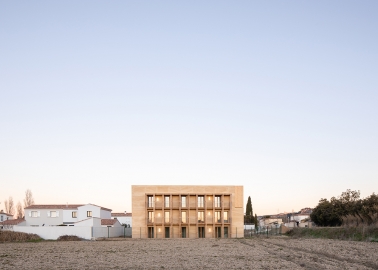 © Florence Vesval
© Florence Vesval
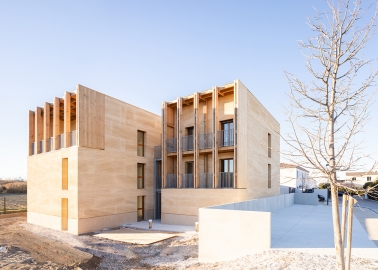 © Florence Vesval
© Florence Vesval
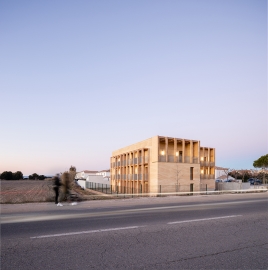 © Florence Vesval
© Florence Vesval
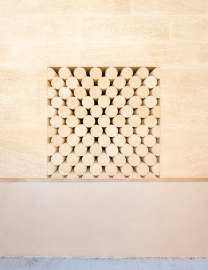 © Florence Vesval
© Florence Vesval
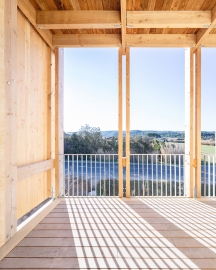 © Florence Vesval
© Florence Vesval
